Did you know that Maori hand tattoos, known as “Ta Moko,” are more than just pretty designs? They are a language and a sign of power and honor.
The word “tattoo” comes from the Tahitian word “Tatau,” meaning “to strike” or “to hit.” In Maori culture, hand tattoos show a person’s identity. They reveal social status, rank, and family history.
These traditional Polynesian tattoos share stories of life, heritage, and identity. Each tattoo is a unique story of the wearer’s history and values.
Key Takeaways
- Maori hand tattoos are a traditional form of Polynesian tattooing.
- They signify social status, rank, and familial history.
- The process of getting a Maori hand tattoo is steeped in tradition.
- These tattoos are a language and a symbol of power and honor.
- Maori tattoos tell stories of life, heritage, and identity.
The Cultural Heritage of Maori Tattooing (Ta Moko)
Maori tattooing, or Ta Moko, is more than body art. It’s a language that shows identity, status, and spiritual bond. Exploring Ta Moko reveals its deep cultural value and its role in Maori society.
Origins and Historical Significance
Ta Moko’s roots go back to Eastern Polynesia, brought by the Maori to New Zealand. Over time, it evolved uniquely in Aotearoa. It represents Maori genealogy, social standing, and spiritual beliefs.
Traditional Maori tattoo designsare not just beautiful. They hold meanings about an individual’s ancestry and community status.
The Role of Tattoos in Maori Identity and Social Structure
In Maori culture, tattoos were key to identity and social structure. Ta Moko showed status, rank, and tribe. Thecultural importance of Maori tattoosis seen in ceremonies and rituals, where they express cultural values.
| Aspect | Significance |
|---|---|
| Genealogy | Represented ancestry and lineage |
| Social Standing | Indicated status and rank within the community |
| Spiritual Beliefs | Connected the individual to the spiritual world |
A Maori proverb says, “Ko nga moko nga whakapapa o te tangata,” meaning “Tattoos are the genealogy of the people.” This shows the strong link between Ta Moko and Maori identity.
“Tattoos are a way of communicating who you are, where you come from, and your status in society.”
Understanding Ta Moko’s cultural heritage lets us see the value of these designs in Maori culture today.
Understanding the Art of Ta Moko vs. Kirituhi
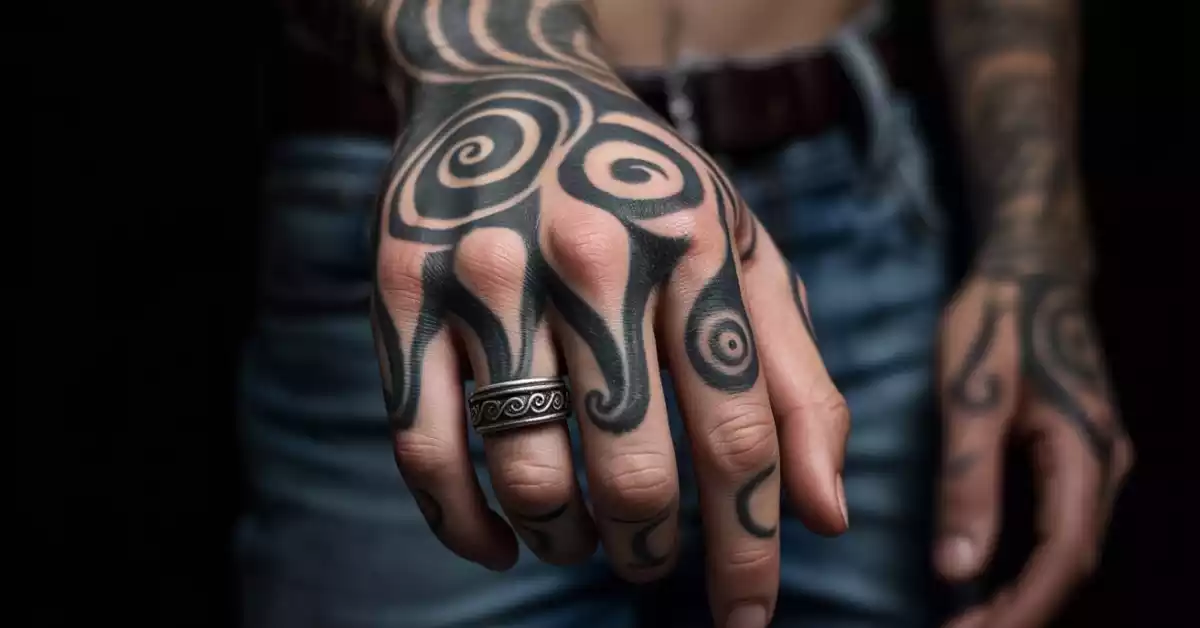
To understand Maori hand tattoos, knowing the difference between Ta Moko and Kirituhi is key. Ta Moko is a sacred tradition for Maori people. Kirituhi, on the other hand, are designs inspired by Maori art for non-Maori individuals. This difference helps us appreciate the cultural nuances and maori tattoo symbolism in these tattoos.
Sacred Permanent Markings: Ta Moko
Ta Moko is a form of scarification with deep grooves and dark pigment. It holds deep cultural and spiritual meaning for Maori people. It’s more than body art; it’s a rite of passage, showing status, rank, and spiritual connection.
The significance of Maori hand tattoos in Ta Moko is huge. They show tribal affiliations, life events, and ancestral lineage.
Maori-Inspired Designs: Kirituhi
Kirituhi are Maori-inspired designs for non-Maori individuals. While Kirituhi uses Maori tattoo art’s rich symbolism, it’s not sacred for non-Maori. It’s a way for people to wear Maori-inspired designs, fostering cross-cultural understanding.
| Aspect | Ta Moko | Kirituhi |
|---|---|---|
| Cultural Significance | Sacred tradition for Maori people | Maori-inspired designs for non-Maori |
| Spiritual Meaning | Holds deep spiritual and cultural significance | Appreciative wear, not spiritually significant |
| Purpose | Signifies status, rank, and spiritual connection | Promotes cross-cultural appreciation |
Traditional Tools and Techniques of Maori Hand Tattooing

Maori hand tattooing is deeply rooted in tradition. It uses ancient tools and techniques passed down through generations. This art is not just about looks; it’s a rite of passage and a way to connect with ancestors. It’s a big part of Maori identity.
Ancient Methods: Uhi (Chisels) and Natural Pigments
Traditionally, Maori tattooing used uhi (chisels) made from bone or stone. These tools were used to carve designs into the skin. The process was both painful and sacred.
The pigments came from natural sources like soot or minerals. They were mixed with oil or water to make a durable ink.
The Pain and Healing Process in Traditional Tattooing
Getting a traditional Maori hand tattoo is painful. It involves manually puncturing the skin with the uhi to insert ink. This pain is seen as a test of strength and endurance.
The healing process is also important. It often involves rituals and care to ensure proper healing and to minimize infection risk.
Modern Adaptations While Honoring Ancestral Practices
While traditional methods are still valued, modern adaptations have been made. These changes make the process safer and more accessible. Many Maori tattoo artists now use traditional techniques with modern equipment.
| Aspect | Traditional Method | Modern Adaptation |
|---|---|---|
| Tools | Uhi (bone or stone chisels) | Tattoo machines |
| Pigments | Natural (soot, minerals) | Synthetic inks |
| Pain and Healing | Significant pain, ritualistic healing | Still painful, with modern aftercare |
Understanding the traditional tools and techniques of Maori hand tattooing helps us appreciate its cultural importance. It shows the artistry in these traditional designs.
Authentic Maori Hand Tattoo Meanings and Symbolism
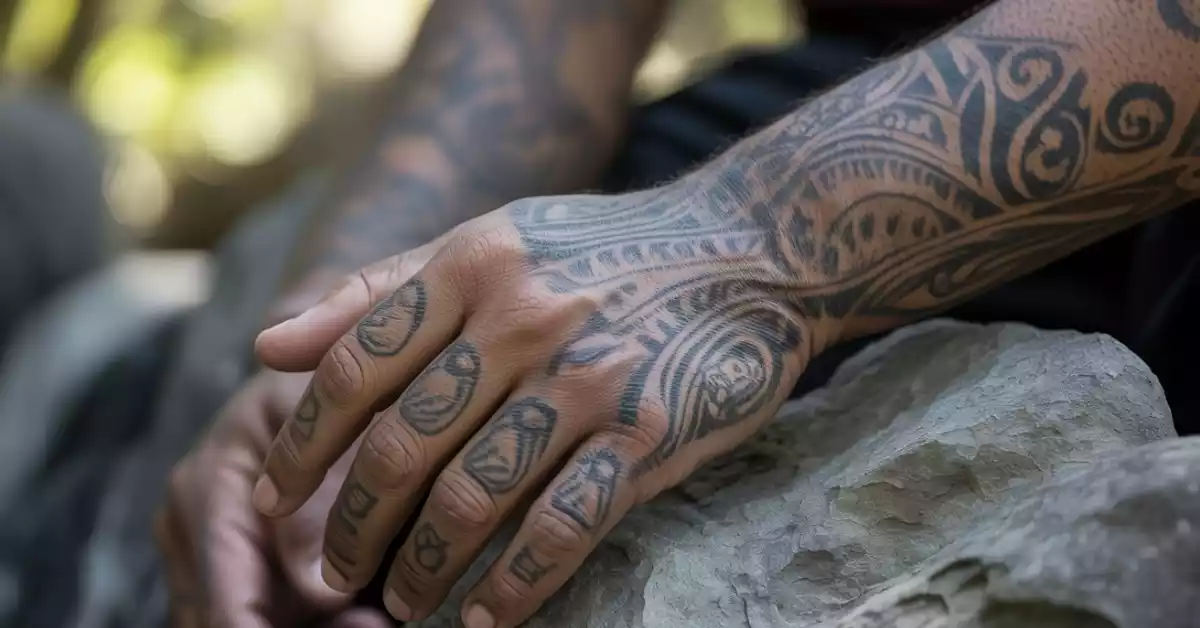
Maori hand tattoos show a person’s ancestry, tribe, and life story. Each tattoo is unique and holds deep meaning. They are more than just art; they carry cultural and spiritual significance.
The Significance of Hand Placement in Maori Culture
In Maori culture, tattoos on the hand are very important. The hand is seen often, making the tattoo a constant reminder of heritage. It shows the wearer’s tribe and achievements.
How Hand Tattoos Communicate Tribal Affiliation and Status
Maori hand tattoos share a person’s identity, tribe, and status. Each design has its own meaning, showing rank or role in the tribe. For example, some patterns mean a person’s position in their community.
| Tattoo Design | Tribal Affiliation | Status/Significance |
|---|---|---|
| Koru (Spiral) | Ngapuhi | Growth, New Life |
| Manaia (Spiritual Guardian) | Ngati Porou | Protection, Spiritual Guidance |
| Kowhaiwhai (Scroll-like) | Te Arawa | Tribal Connections, Nature |
The Storytelling Element of Hand Moko
Maori hand tattoos are stories on skin. They tell of ancestry, achievements, and life’s journey. Each tattoo is a mix of tradition and personal touch, creating a unique story.
Exploring Maori hand tattoos reveals a rich culture. It values identity, community, and shared stories. These tattoos are a powerful way to express oneself, blending beauty, spirituality, and heritage.
Essential Patterns and Motifs in Maori Hand Tattoos
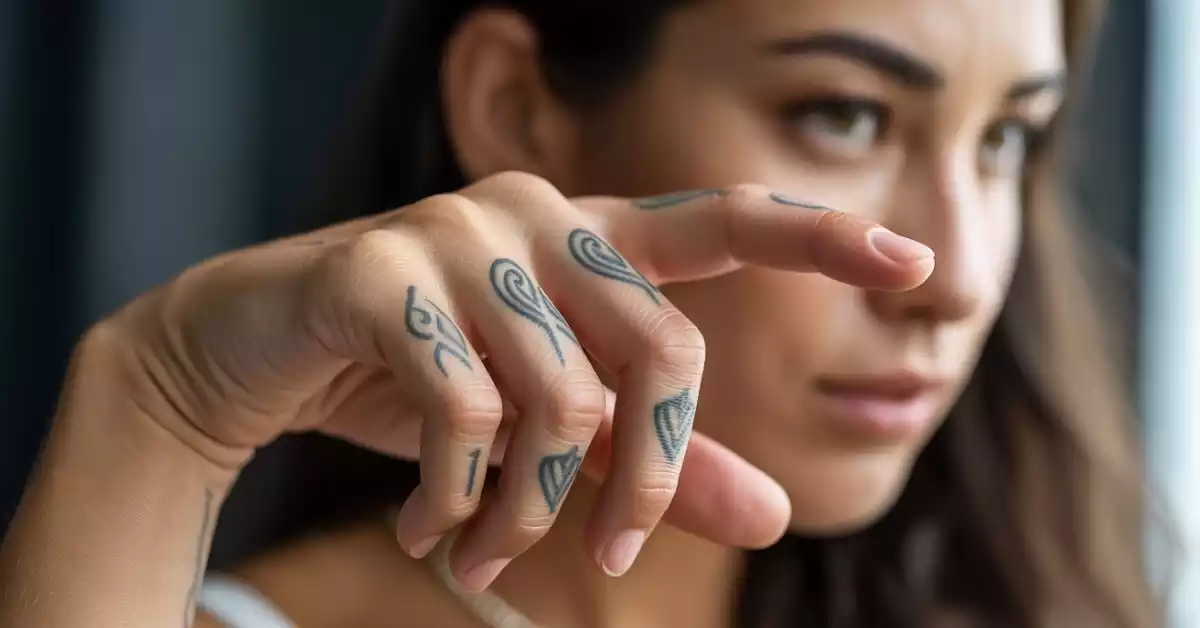
In Maori culture, hand tattoos tell stories of identity and spirituality. These designs are not just beautiful but also carry deep meanings. They are key to understanding Maori heritage.
Koru (Spiral) Designs: Growth, New Life, and Harmony
The koru design is a spiral shape that’s highly valued in Maori tattoos. This motif symbolizes growth, new life, and harmony. It shows the cycle of life and how everything is connected. The koru represents new beginnings and growth.
Manaia (Spiritual Guardian) Patterns: Protection and Spiritual Guidance
Manaia patterns are important in Maori tattoos, showing spiritual guardianship and protection. These designs are believed to offer guidance and safeguard the wearer from harm. The manaia is a mix of animals, showing its role as a spiritual guardian.
Kowhaiwhai (Scroll-like) Designs: Tribal Connections and Nature
Kowhaiwhai designs are scroll-like and key to Maori art and tattooing. These motifs signify tribal connections and a deep relationship with nature. They often show the wearer’s ancestry and their place in nature.
Ocean and Wave Patterns
Ocean and wave patterns are found in kowhaiwhai designs, symbolizing the ocean’s power. These motifs connect the wearer to their ancestors and the natural environment. They highlight the sea’s importance in Maori culture and identity.
Mountain and Earth Symbols
Mountain and earth symbols are common in kowhaiwhai designs, representing stability and strength. These elements ground the wearer in their cultural heritage and the physical world. They show the importance of the natural landscape in Maori spirituality and identity.
Exploring Maori hand tattoos reveals a world of rich narratives. Each pattern and motif is deeply connected to Maori culture and tradition. By understanding these designs, you can appreciate the significance of Maori tattoo symbolism and traditional Maori tattoo designs.
The Spiritual and Ancestral Connections of Hand Moko

Maori hand tattoos are more than just pretty designs. They hold deep spiritual and ancestral meanings. These tattoos, called Hand Moko, show a person’s strong tie to their heritage and family history.
Connecting to Whakapapa Through Skin Markings
In Maori culture, tattoos link the wearer to their whakapapa (genealogy). They show a person’s family line and ancestry. This bond is real, marked on the skin.
The Role of Dreams and Visions in Tattoo Design
The making of Maori hand tattoos often starts with dreams and visions. These are seen as messages from ancestors or the spiritual world. They help the tattoo artist create designs that are both beautiful and spiritually meaningful.
Honoring Ancestors and Carrying Their Mana
Wearing these tattoos is a way to honor ancestors and keep their mana (spiritual power) alive. It shows the lasting impact of Maori traditions and the value of family ties.
Maori hand tattoos highlight the cultural importance of Maori tattoos. They are not just for looks. They connect the wearer to their heritage and the Maori community.
Gender Distinctions in Traditional Maori Hand Tattoos

In traditional Maori culture, hand tattoos, or Ta Moko, are key to identity. They show status, spirituality, and tribe, with different designs for men and women.
Male Hand Tattoo Patterns and Their Specific Meanings
Male hand tattoos in Maori culture show strength, status, and warrior heritage. They have bold patterns that show rank, tribe, and achievements. The designs are intricate, reflecting the individual’s genealogy and history, and mark manhood.
A Maori cultural expert says, “The tattoos on a Maori warrior’s hands were like a badge of honor, signifying his status and prowess in battle.” This shows how important hand tattoos are for Maori men.
Female Hand Tattoo Traditions (Moko Kauae on Hands)
Female hand tattoos, like moko kauae, have deep cultural and spiritual meaning. They were rare on hands but for high-status women. Moko kauae on hands symbolize a woman’s spiritual connection, marital status, and social standing within the community. The designs are less detailed but just as meaningful.
A traditional Maori proverb says, “A woman’s beauty is not just in her face, but in the stories her tattoos tell.” This shows the cultural importance of female hand tattoos in Maori society.
Modern Evolutions in Gender-Specific Designs
In today’s world, Maori hand tattoo designs have changed. They keep traditional elements but also adapt to new styles. Both men and women can now choose their designs, while still respecting traditional differences. Modern Maori tattoo artists blend ancient techniques with contemporary styles, making unique pieces that honor heritage and personal taste.
Traditional Maori hand tattoos still shape modern tattoo art. Many artists worldwide find inspiration in these designs.
The Resurgence of Maori Tattoo Traditions in Contemporary Culture

Today, Maori tattoo traditions are making a big comeback. This is thanks to a mix of cultural revival and new artistic ideas. Maori people are working hard to bring back their cultural heritage through Ta Moko.
Cultural Revival and Reclamation After Colonial Suppression
Maori tattoos have faced tough times, mainly during colonial days. But, their cultural value has sparked a new interest in these traditions. The resilience of Maori culture shines through in their efforts to keep Ta Moko alive.
Contemporary Maori Artists Preserving and Evolving Traditions
Modern Maori artists are leading this cultural comeback. They keep traditional methods alive while adding new twists. This mix of old and new is key to keeping Maori tattoo art relevant today.
| Traditional Technique | Modern Adaptation | Cultural Significance |
|---|---|---|
| Uhi (chisels) and natural pigments | Modern tattoo machines with traditional designs | Preservation of ancestral practices |
| Hand-carved designs | Computer-aided design (CAD) for precision | Evolution of traditional artistry |
| Rituals and ceremonies | Incorporation of modern rituals | Spiritual connection and cultural identity |
The Global Recognition of Maori Tattoo Artistry
Maori tattoo art is now recognized worldwide. This shows its cultural importance and beauty. Maori tattoo symbolism is gaining fans globally, boosting respect for Maori culture.
Exploring Maori tattoos today means seeing a cultural revival. It also helps spread appreciation for this unique art form globally.
Cultural Appropriation Concerns and Respectful Appreciation

Maori hand tattoos are becoming more popular worldwide. It’s important to know the difference between respecting and taking without permission. These tattoos hold deep cultural and spiritual value for the Maori people.
Understanding the Difference Between Appreciation and Appropriation
Appreciating a culture means valuing its traditions, like Maori hand tattoos, with respect. But, taking parts of a culture without understanding or permission is appropriation. This can harm the culture and its people.
Appreciation is about learning and being inspired by another culture. It’s about recognizing its importance and giving credit. Appropriation, on the other hand, is taking cultural symbols without respect or understanding.
Guidelines for Non-Maori Interested in Maori-Inspired Designs
If you’re interested in Maori-inspired tattoos, be careful. Here are some tips:
- Learn about the meanings and significance of Maori hand tattoos.
- Speak with Maori tattoo artists or cultural advisors to ensure your tattoo is respectful.
- Know the cultural context and history of the designs you’re interested in.
Consulting with Maori Tattoo Artists and Cultural Advisors
Talking to Maori tattoo artists or cultural advisors is key. They can share the true meanings of Maori hand tattoos. They can also help make sure your tattoo is done with respect.
By following these steps, you can show respect for Maori hand tattoos. This way, you can appreciate them without hurting their cultural value.
🔥 Ready to Discover the Perfect Maori Tattoo Design?
Unleash your creativity and dive into one of the world’s largest tattoo design libraries — with over 30,000+ professional tattoo designs, including stunning Maori, Tribal, Polynesian, and Symbolic styles!
👉 Why Choose Miami Ink Tattoo Designs?
- ✅ 60+ Unique Tattoo Categories – Includes exclusive Maori and tribal collections
- 🎨 165+ Tattoo Fonts & Lettering Styles – Perfect for script and hand ink inspiration
- 📚 Access Rare Tattoo Books & The Tattoo Bible – Insider tips, meanings, and stencils
- 🎥 60+ Hours of Tattoo Videos – Learn, get inspired, or just enjoy tattoo art in action
- 📱 Access Anytime, Anywhere – Fully optimized for mobile and desktop
- ⭐ Over 45,000 Satisfied Members Worldwide
🚀 Don’t Settle for Average Tattoos — Get Inspired by the Best!
🎁 Click below and start exploring instantly. Your dream tattoo is just one click away.
👉 Join Miami Ink Tattoo Designs Now – Limited Time Offer – Save 60%!
Conclusion: Honoring the Sacred Art of Maori Hand Tattoos
Maori hand tattoos are more than just art. They are a deep expression of culture, spirituality, and heritage. These tattoos show a person’s identity, status, and spiritual bond. It’s important to appreciate them with respect and understanding of their cultural background.
The symbols in Maori tattoos tell stories of tribe, status, and personal experiences. By learning about Ta Moko, you gain a deeper respect for Maori culture. As you explore Maori hand tattoos, always approach them with reverence and cultural awareness.
FAQ
What is the significance of Maori hand tattoos?
Maori hand tattoos, known as “Ta Moko,” are traditional Polynesian tattoos. They hold deep cultural and spiritual meaning. They signify identity, status, and spiritual connection.
What is the difference between Ta Moko and Kirituhi?
Ta Moko is a sacred tattooing tradition for Maori people. Kirituhi, on the other hand, are Maori-inspired designs for non-Maori. They allow others to appreciate Maori culture without taking it.
What are the traditional tools used in Maori hand tattooing?
Traditional Maori hand tattooing uses uhi (chisels) and natural pigments. This shows the resourcefulness and spiritual bond of Maori people with their ancestors and nature.
What do Koru designs represent in Maori hand tattoos?
Koru designs in Maori hand tattoos symbolize growth, new life, and harmony. They show the wearer’s connection to their heritage and nature.
How do Maori hand tattoos communicate tribal affiliation and status?
Maori hand tattoos communicate tribal affiliation and status through intricate designs. These designs signify various aspects of a person’s identity, including social status, rank, and family history.
What is the role of dreams and visions in Maori tattoo design?
Dreams and visions are crucial in Maori tattoo design. They guide the design process and connect the wearer to their ancestors and spiritual heritage.
How can non-Maori individuals respectfully appreciate Maori-inspired tattoos?
Non-Maori individuals can appreciate Maori-inspired tattoos by seeking guidance from Maori tattoo artists and cultural advisors. This ensures their appreciation is respectful and not appropriative.
What is the cultural significance of hand placement in Maori tattoos?
The hand placement of Maori tattoos is significant. It is a visible representation of one’s heritage and affiliations. It signifies the wearer’s identity and status.
Are there gender distinctions in traditional Maori hand tattoos?
Yes, traditional Maori hand tattoos show gender distinctions. Male and female designs have different patterns and meanings. They reflect the wearer’s identity and status.
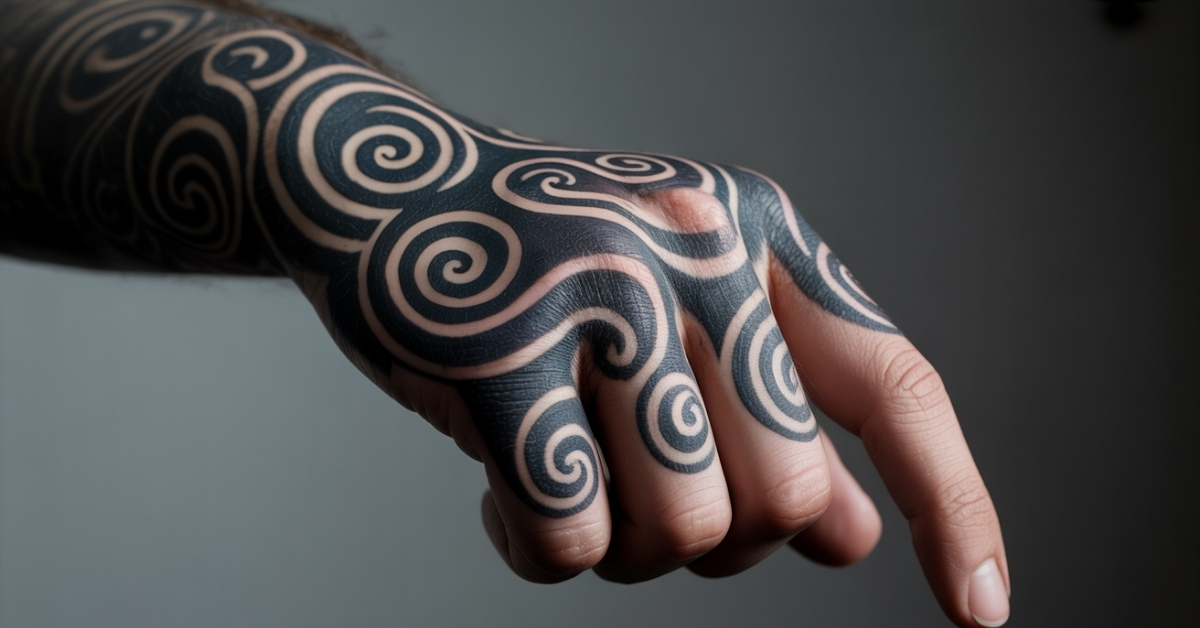



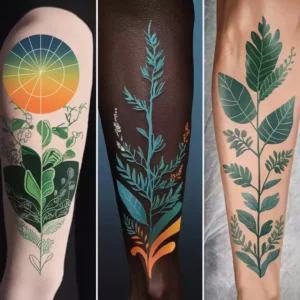
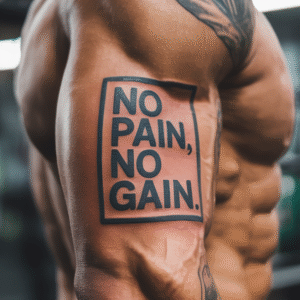

Pingback: Small Maori Symbol Tattoos for Fingers and Hands: Minimalist Tribal Designs